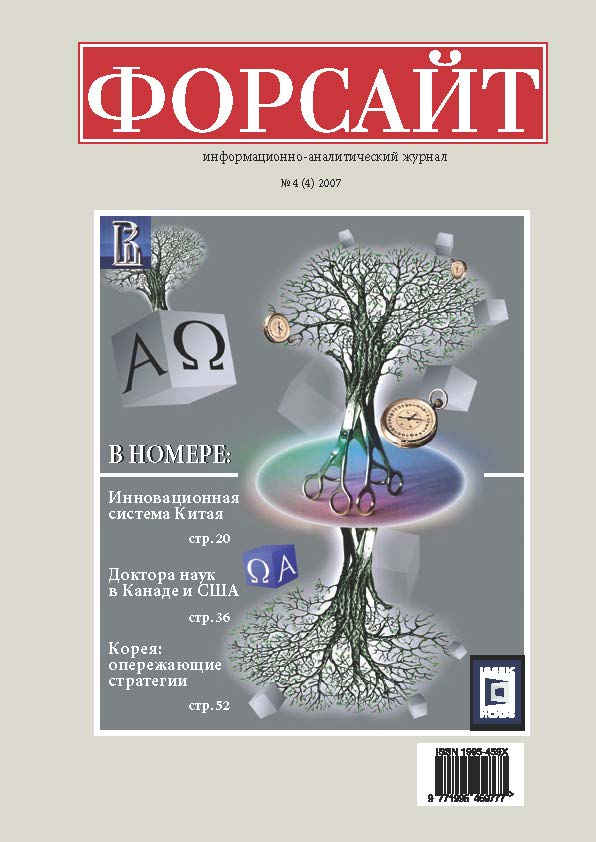Abstract
Science and technology policy in developed countries over the past three decades has undergone significant changes. Back in 1970-80s its role was mainly to finance basic research and on that basis, the generation of new knowledge, as well as to support scientific institutions and research infrastructure through the implementation of public programs. With the intensification of scientific research, increase their impact on economic growth and competitiveness of the companies the main purpose of scientific and technological policy was the creation of conditions for increasing the efficiency of research and development of knowledge transfer networks with the participation of business and science. The concept of "national innovation system”, involving the processes of production, transfer and practical application of knowledge has become widespread. Despite the steadily increasing expenditure on science, which reached in some countries the level of 2-3% of GDP, even the richest countries can not afford to conduct research to date on all fronts. In this connection it became necessary to select priority areas for investment and focus the main effort of the Government. Therefore, the most important task of science policy was the development tool for determining the scientific and technological priorities, and mechanisms for their implementation.
References
Eine Erste Bilanz. Futur: Der deutsche Forschungsdialog. BMBF, Bonn, 2003.
Georghiou L. Future of Foresighting for Economic Development. Technology Foresight Summit, Budapest, UNIDO, 2007.
Klusacek K. Key technologies for Czech National Research Programme. Technology Foresight Summit, Budapest, UNIDO, 2007.
Louvet J.P. Les principaux rйsultats de l'йtude Technologies clйs 2005. Ministиre de l'Йconomie, des Finances et de l'Industrie, Paris, 2000.
National Critical Technologies Report / Office of Science and Technology Policy (USA). Washington, D.C., 1995.
Popper S., Wagner C., Larson E. New Forces at Work. Industry Views Critical Technologies. RAND, Washington, 1998.
Technology Radar. The Hague, 1998.
Thenint H. Key technologies for France 2010. EFMN Brief № 107, 2007.
Дуб А.В., Шашнов С.А. Инновационные приоритеты для энергетического машиностроения: опыт отраслевого Форсайта // Форсайт, 2007, №3, с.4-11.
Комплексная программа научно-технического прогресса и его социально-экономических последствий. Том 15. Развитие науки. АН СССР, ГКНТ СССР, 1979.
Николаев И.А. Приоритетные направления науки и технологий. М.: «Машиностроение», 1995.
Соколов А.В. О конкурентоспособности российских технологий // Промышленная политика в Российской Федерации, 1999, № 4, с. 23-35.
Шашнов С.А. Форсайт Республики Башкортостан//Форсайт, 2007, №1, с.16-24.

This work is licensed under a Creative Commons Attribution 4.0 International License.

